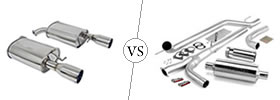Difference between Detergent and Washing Powder
Key Difference: Detergents are surface active agents and generally made from petro- chemicals, whereas washing powders are powdered form of detergents that are generally used for washing fabrics.
Even in the ancient times, chemical additives were used for cleaning purposes. Egyptians used to add ashes and silicates to soften the water. The first detergent is considered to be the soap. But, as the soap was considered relatively ineffective therefore, later it got replaced by branched alkylbenzenesulfonates as detergents.
 Detergents and washing powders are very important part of our modern living culture. The dirt and stains can be easily removed in less time with the help of these detergents. Some may get confuse between the two terms but, there is a slight difference between a detergent and a washing powder. Detergent refers to a broad category of surface active agents used for cleansing purposes, whereas washing powder is a detergent in form of powder.
Detergents and washing powders are very important part of our modern living culture. The dirt and stains can be easily removed in less time with the help of these detergents. Some may get confuse between the two terms but, there is a slight difference between a detergent and a washing powder. Detergent refers to a broad category of surface active agents used for cleansing purposes, whereas washing powder is a detergent in form of powder.
Oxford Dictionary defines detergent as ‘a water-soluble cleansing agent which combines with impurities and dirt to make them more soluble, and differs from soap in not forming a scum with the salts in hard water’
Oxford Dictionary defines washing powder as ‘detergent in the form of a powder for washing clothes, bed linen, etc.’
As clear from the definitions of detergent and washing powder, a washing powder can be described as a kind of detergent and specifically has a form of powder. Detergent refers to mixtures of chemical compounds including alkylbenzenesulfonates. The detergents can be compared with soaps but the detergents have been specifically made to get less affected by hard water. Washing powder is one of the most commonly used forms of detergent. The main purpose of using the detergent is to pull away the dirt and grin mainly from clothes and rinse it out with water.
Apart from the powder form as washing powder, the detergents also come in liquid form and are known as liquid detergents. The washing powder is generally cheaper than liquid detergents. The washing powder can come in cardboard packaging, thus is regarded more suitable for the environment, whereas the liquid detergent cannot be packaged in cardboard directly. The liquid detergents can be used to treat the stains before washing the clothes, as the liquid can directly be poured on the stains.
Washing powders are generally mixtures of substances including active detergent, water softener and enzymes. It serves the purposes like cleaning, softening of hard water, removing of coloured stains, removing food stains, etc. Most of the dirt is removed by the detergents when they are used with hot water. However there are also some advantages of washing at low temperatures. Today laundry detergents are found in various forms:-
removing of coloured stains, removing food stains, etc. Most of the dirt is removed by the detergents when they are used with hot water. However there are also some advantages of washing at low temperatures. Today laundry detergents are found in various forms:-
- General Purpose detergents- made to suit any kind of fabric and textile
- Light-duty detergent-made for very delicate laundry
- High- Efficiency detergent: specially created for high efficiency machines.
- Liquid detergent- made for hard stains of food and grease
- Powder detergent- like general purpose detergents, but extremely effective at lifting ground-in dirt.
- Combination Detergents- made to do two kinds of cleaning at the same time like washing and bleaching.
There are several types of detergents: anionic, nonionic, cationic and amphoteric. Anionic detergents act just like soaps chemically. They are powerful cleansers and can build high foams. However, anionic detergents can be deactivated in the presence of acids, and thus they are mixed with alkalis such as Borax or sodium carbonate and perhaps cationic or nonionic detergents are also not affected by the acids as well. Alkalis act as "builders" in detergents and assist in raising the level of pH. When this level of pH rises, then it also leads to softening of water.
Nonionic detergents are neutral detergents that are commonly used in dish washing liquids. They do not react with hard water ions and also, nonionic detergents create less foam than ionic detergents. Amphoteric detergents are quite mild and are used mainly in personal care products like shampoos and body washes. Cationic surfactants are used in fabric softeners and fabric softening detergents such as wool washes.
Image Courtesy: background-pictures.feedio.net, indiamart.com









Add new comment